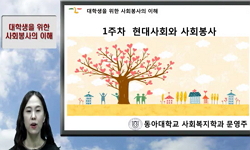적하효과(trickle-down effect)는 "조직 내 한 구성원(주로 상사)의 인식이 다른 구성원(주로 부하)의 인식에 미치는 영향"을 의미하는 것으로, 최근에 조직행동 연구에 도입된 새로운 관점이다. 적...
http://chineseinput.net/에서 pinyin(병음)방식으로 중국어를 변환할 수 있습니다.
변환된 중국어를 복사하여 사용하시면 됩니다.
- 中文 을 입력하시려면 zhongwen을 입력하시고 space를누르시면됩니다.
- 北京 을 입력하시려면 beijing을 입력하시고 space를 누르시면 됩니다.

리더-부하 적하효과(trickle-down effect)에 대한 탐색적 연구 = Explorative Study of Leader-Follower Trickle-Down Effects: Organizational Ethical Standard Salience and Social Responsibility
한글로보기https://www.riss.kr/link?id=A100181109
- 저자
- 발행기관
- 학술지명
- 권호사항
-
발행연도
2014
-
작성언어
-
- 주제어
-
KDC
325
-
등재정보
KCI등재
-
자료형태
학술저널
- 발행기관 URL
-
수록면
35-62(28쪽)
- 제공처
-
0
상세조회 -
0
다운로드
부가정보
국문 초록 (Abstract)
적하효과(trickle-down effect)는 "조직 내 한 구성원(주로 상사)의 인식이 다른 구성원(주로 부하)의 인식에 미치는 영향"을 의미하는 것으로, 최근에 조직행동 연구에 도입된 새로운 관점이다. 적하효과에 관한 연구동향을 소개하고, 조직의 윤리기준의 명확성에 대한 리더의 인식이 부하에게 전달되는 적하효과를 실증하였다. 추가적으로, 이 둘 사이의 관계를 조절하는 상황변수로서 사회적 책임 인식수준의 상호작용 효과를 검정하였다. 국내 대기업 제조업체 한 곳을 대상으로 설문조사 하여 관리자-종업원 150쌍(합계 300명)의 응답결과를 분석하였다. 동일방법분산의 문제를 줄이기 위하여 독립변수에는 팀장의 응답을 사용하고 종속변수에는 팀원의 응답을 사용하였다. 다중회귀분석 결과, 첫째, 리더의 조직윤리기준 인식 명확성과 부하의 조직윤리기준 인식 명확성은 정적인 방향으로 유의한 관계를 가지고 있었다. 둘째, 부하의 사회적 책임 인식수준은 조직윤리기준 인식 명확성과 정적인 방향으로 유의한 관계를 가지고 있었다. 셋째, 리더의 조직윤리기준 인식 명확성과 부하의 조직윤리기준 인식 명확성 간의 정적인 관계는 사회적 책임 인식수준이 낮은 부하일수록 더 강하게 나타났다. 이상의 실증결과들이 가지는 이론적, 실무적 함의 및 한계와 향후 연구 방향을 토론하였다.
다국어 초록 (Multilingual Abstract)
Ethics programs, such as the installation of a code of ethics, are commonplace in today's business world, with many companies adopting ethics programs in response to the social pressure for more transparent corporate integrity. The success of any ethi...
Ethics programs, such as the installation of a code of ethics, are commonplace in today's business world, with many companies adopting ethics programs in response to the social pressure for more transparent corporate integrity. The success of any ethics program does not lie simply in the establishment of the program itself, but instead is predicated on the employees recognizing and following the ethical standards reinforced by the program. In other words, it is critical for employees to clearly understand the ethical standards of the organization.
Trickle-down research is a field of study that investigates the influence of leaders on followers, in particular whether certain values and behaviors observed in a leader can also be seen among followers. The term trickle-down refers to the transfer of a certain variables from a leader to a follower. It signifies the delivery of the same values, perceptions and behaviors from the top of the organizational hierarchy to the bottom. The trickle-down phenomenon suggests a simple but important managerial implication to the field. It is that if a supervisor expects a follower to perform a certain act, the supervisor should do it first to induce the same behavior from the follower.
In the beginning, trickle-down research was actively carried out in relation to organizational justice. Masterson (2001) stated that the organizational justice recognized in American university lectures increased the lectures' organizational commitment, which in turn influenced the justice perception as perceived by students. Tepper and Taylor (2003) reported that the procedural justice perceived by a higher-ranking officer in the US military influenced the officer's own organizational citizenship behavior, which in turn affected the follower's awareness of procedural justice and their organizational citizenship behavior. Aryee et al. (2007) tested a trickle-down model in which the interactional justice of an organization perceived by a supervisor reduced the supervisor's own abusive behavior and affected followers' perceptions of interactional justice, consequently influencing their organizational citizenship behavior and organizational commitment.
Recently, research into the trickle-down effect has expanded from organizational justice to other domains such as ethical leadership and abusive supervision. Mayer et al. (2009) investigated the ethical leadership of CEOs and middle managers at companies located in the southeastern United States. In addition, Ruiz et al. (2011) studied ethical leadership between CEOs and middle managers at Spanish banks and insurance companies, and Park and Go (2009) surveyed Korean military and non-commissioned officers regarding superior officers' abusive supervision of those immediately beneath them.
In terms of organizational ethics research, many previous empirical studies have focused on the ethical behavior of the leader; our study, on the other hand, focuses on the degree to which the perception of a leader influences the perception of followers. This paper investigates the relationship between the perceived salience of organizational ethical standards for supervisors and that for subordinates.
We surveyed 150 employees and their supervisors (a total of 300 persons) at a manufacturing company in Korea. The research was designed to prevent a common method bias by separating the response sources for the dependent and independent variables. The results of OLS regression analyses are presented to test our hypotheses.
The first hypothesis was that there is a positive relationship between the importance of the ethical standards as perceived by a supervisor and that perceived by his or her subordinates. In other words, when supervisors have a more salient perception of a company's ethical standards, the subordinates will also have a more salient perception of the company's ethical standards. The empirical results supported the first hypothesis.
The second hypothesis
목차 (Table of Contents)
- 초록
- Ⅰ. 서론
- Ⅱ. 이론적 기반과 가설
- Ⅲ. 연구 방법
- Ⅳ. 결과
- 초록
- Ⅰ. 서론
- Ⅱ. 이론적 기반과 가설
- Ⅲ. 연구 방법
- Ⅳ. 결과
- Ⅴ. 토론
- 참고문헌
- ABSTRACT
동일학술지(권/호) 다른 논문
-
심리적 계약의 위반과정에서 매개변인과 조절변인에 관한 연구
- 한국인사조직학회
- 김경민(Kyung Min Kim)
- 2014
- KCI등재
-
Reward Preferences of Chinese Employees Within and Between Nations: Does Location Matter?
- 한국인사·조직학회
- 권종욱
- 2014
- KCI등재
-
- 한국인사조직학회
- 정동섭(Dong Seop Chung)
- 2014
- KCI등재
-
고몰입 인적자원관리에 대한 인식이 직무스트레스에 미치는 영향
- 한국인사·조직학회
- 김주희
- 2014
- KCI등재





 스콜라
스콜라






